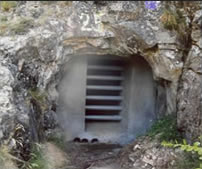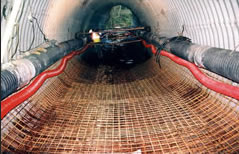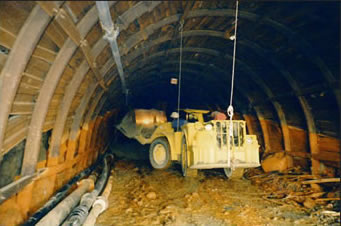Underground works, rehabilitation of tunnels and shafts, implementing security requirements
A little backgroundUnderground works occupy an important place in this section of the website, which is dedicated to "technical explanations". Although it is not properly speaking a technique, the question is worth addressing as these works require a particular combination of methods and techniques which sets them apart. Underground works comprise: Combined techniquesUnderground works require a number of techniques to be applied in difficult-to-access, confined spaces (a constraining environment):
Retaining structuresWhen dealing with altered soils or altered rocky terrains, several retaining techniques can be considered: |
Excavation techniquesSeveral parameters need to be taken into account when boring shafts:
In rocky environments, Blasting and techniques involving TBM are the most common. In the case of soil two approaches are possible : WaterUnderground works are generally expoed to significant hydraulic strains. Several operations may then be necessary: |
Rehabilitation and tunnel equipmentUnderground works must be regularly maintained. Provisions have to be made for consolidation and drainage operations.
Tunnels involve connected operations: |
"In the case of rehabilitation or maintenance of wastewater draining tunnels, it is necessary to provide proper ventilation as well as individual lighting and an MX2 or Multigaz Minitor gas detector." |
Caution measuresIt is necessary to exercise caution as underground works may have a major impact on the environment. Operating at urban sites requires careful monitoring of the land movements induced by excavating and by the long-term nature of the works. Maintaining urban works such as sewer tunnels also requires paying attention to the effluent gases emanating from the waste water. We recommend to use of a type of concrete suited to the more or less aggressive nature of the environment.
|
|||
Keep in mind that a geotechnical study, as well as a study of the types of concrete needed are indispensable to ensure the durability of the projected works.






